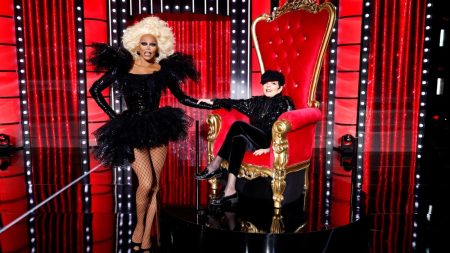Yellowjackets Season 3: A New Chapter in Survival and Growth
At the close of Season 2, the teen Yellowjackets found themselves at a critical juncture. Their cabin, once a fragile sanctuary, was engulfed in flames, leaving them vulnerable and exposed in the harsh Canadian wilderness. The season ended with this dramatic tableau, setting the stage for a narrative that could have delved into the immediate, desperate struggle for survival. However, Season 3 takes an unexpected turn, eschewing the anticipated winter aftermath for a time jump to summer. This season opener reveals the teens thriving in a makeshift village, complete with wooden huts, a garden, and a small farm—a testament to their resilience and resourcefulness. This strategic shift in storytelling offers a fresh perspective, showcasing their adaptability and strength as they carve out a new life amidst the wilderness.
The Creative Decision: Reset and Renewal
The decision to leap forward in time was not taken lightly by the show’s creators. Co-creators Ashley Lyle and Bart Nickerson, along with showrunner Jonathan Lisco, engaged in extensive discussions about whether to continue the story in the winter or employ a time jump. Lyle explained that the team sought a "reset" to signify a clean break from the previous season’s events, allowing for a narrative that felt revitalized and free from the constraints of the past. The choice also had practical considerations, as recreating winter scenes during summer filming posed significant logistical challenges. Lisco highlighted the storytelling benefit of this choice, noting that it underscores the characters’ formidable strength and resourcefulness, implying that their survival through winter was nothing short of remarkable.
Cast Insights: Embracing the Shift
The cast’s reactions to this narrative shift provide further insight into the season’s direction. Samantha Hanratty, who portrays young Misty, admitted initial disappointment at not exploring the winter struggle but came to appreciate the positive tone the time jump afforded. Similarly, Sophie Nélisse, who plays Shauna, expressed surprise at bypassing the winter survival story but found the new approach compelling. She noted that seeing the group thrive adds an eerie layer, hinting at underlying tensions. These sentiments reflect a broader understanding among the cast that the season’s shift not only resets the narrative but also deepens the psychological complexity of the characters.
Season Opener: Echoes of the Past and New Mysteries
The third season’s premiere episode introduces familiar themes while weaving in new plot threads. The opening scene features Mari running through the woods, chased by haunting howls, evoking memories of the enigmatic Pit Girl from Season 1. This deliberate echo serves as a nod to the show’s history while hinting at the ongoing mysteries. By the episode’s end, Mari is found trapped in the pit by Coach Scott, a tableau that mirrors the earlier characterization of Pit Girl. Creators Lyle and Lisco confirmed the intentionality of these narrative choices, aiming to reset the season’s tone and interweave elements of primal joy with the sinister undertones of survival. The sequence transitions from a perceived hunt to a scene of the teens enjoying a rare moment of levity, encapsulating the duality of their existence.
Character Evolution and Background Perspectives
Season 3 delves deeper into the characters’ growth, particularly Natalie, now the Antler Queen, who embodies a more serious and unified leadership role. Sophie Thatcher, her portrayer, noted Natalie’s forced maturity and efforts to bring cohesion to the group, contrasting with her earlier, more carefree moments. Beyond the main characters, the season sheds light on previously background figures like Melissa and Mari, exploring their experiences and interactions within the group. Nickerson and Lisco emphasized the richness of these characters’ stories, highlighting their silent endurance and nuanced perceptions of their surroundings. This narrative expansion enriches the show’s tapestry, offering a more comprehensive view of life within the Yellowjackets’ community.
Conclusion: A Season of Depth and Exploration
Yellowjackets Season 3 presents a compelling narrative shift, utilizing a time jump to explore new dynamics and delve into the psyches of its characters. By focusing on their summer village, the season captures their resilience and teamwork while hinting at underlying conflicts. The creators’ decision to bypass the winter struggle in favor of a reset has allowed for a fresh, engaging storyline that maintains the show’s tense atmosphere. As characters like Natalie and Mari take center stage, and background figures gain prominence, the season promises a deeper exploration of survival, leadership, and human complexity. This approach not only revitalizes the series but also sets the stage for further mysteries and character development, ensuring that the Yellowjackets’ story remains as captivating as ever.


![‘Yellowjackets’ Bosses on the Parallels Between Pit Girl and [SPOILER], Hitting Reset With Season 3 and That Major Time Jump
More from Variety
Most Popular
Must Read
Sign Up for Variety Newsletters
More From Our Brands](https://www.lifeinism.com/wp-content/uploads/2025/02/Yellowjackets_305_KS_0730_0341_RT-e904a74ca76ddcb3.jpg)






